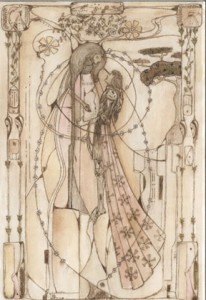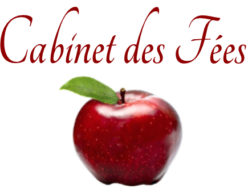 My doughty knight
My doughty knight
with rosebud-snapping lips
has taken me,
his scoliotic hag-bride,
into his petaled bed.
As cold bells proclaim our union
against the stiff-lipped ramparts
he has removed my veil,
smiled,
like one drinking bitter beer.
Yet, with care befitting such a gentleman,
he has stoppered his flood-spreading gorge,
leaned over me,
and kissed my chapping harelip
as if I were a girl of twenty-two.
He has rocked back
on ankles yet unbent by gout and palsy
smiling still beneath his cherubs’ curls
in anticipation
not, alas, in want.
Age and time have been fierce schoolmasters.
They have learned me how to read
the tangling branches,
the best days to gather basil,
the terror blooming in the breath of boys
better than old books:
he expects me to burst from
this grey-skinned cocoon of wrinkles and decay
a new and naked nymph
because he has been true
and wants it so.
The vesper bell has rung
and still he waits,
smile falling with the blistered sun.
Old walrus that I am, I roll to rest
on one acne-dimpled hip
unchanged
as I have been these twenty years
since my bleeding stopped.
At last, the curfew bell
splits the night like coins
and he exhales
like one cheated at a joust.
I almost pity him.
He knows the old tales better than his sword’s
iron heft, his white steed’s pace,
better than the spilling of his cape into the rain to save
a lady’s impractical shoes.
He knows them sure as he
knows he is brave, fair, honorable,
chaste as a marble saint.
How else could he have wedded me,
a solemn hand upon my shriveled paw,
unless he knew what fairy form I’d take
when he concedes his lands, his goods
his everything—
even his preference for golden hair,
lute-curved hips by night?
Like all little boys who long for winter cherries
he is a fool,
but he is a good one.
Yet the valor-tales he holds dear as his battle-standard
have never told him this:
old women are weary
and often comfortable inside their sagging stomachs.
Oh, yes
I was a fair dame long ago,
dark hair coiling down my back like ropes,
slim neck turning left and right
away from calloused hands and leering eyes.
I have known the trembling of youth,
the spill of seven children from my thighs
one too soon and still as winter in my arms.
I have known hunger pangs,
the shame of blood upon my petticoats,
the way a blemish or a graying hair
worries wrinkles through a rosy brow.
I have known these slings of disprized girlhood
far too long to mourn
as I have my three husbands.
I am happy to be quit of them at last.
But oh, poor dear,
he thinks it was a curse!
The ancient jealousy of step-mothers
that cuts a daughter’s beauty at the roots.
Voice soft as blankets, I must tell him no.
My youth has simply sped like autumn sparrows.
No enchantments fair or foul, nay even
great Merlin may unbind a back bowed by sixty years.
Even could it, I would not return
night or day or both to my unripeness.
Old wine, after all,
is better prized than green grapes
and even virtue such as his
must want a little vice.
Don’t you, dearie?
I know my face is pocked like a peach stone.
Well too I know my dugs could break a stallion’s back.
But, my boy,
don’t hate these heavy hands.
They understand a marriage
better than the hearth fire
pricks along your straight-boned toes.
Look into my cataracts,
lean down and kiss my cow-lips
once again.
Just like that.
Yes, you are disappointed.
Given time, all husbands are.
Think of this as a head start.
I have no fairy beauty but
three gifts I offer you:
a body that will keep you warm like the best old quilts.
hands to patch your shirts and press a blush upon your cheeks.
Finally, the last:
a wife who knows a man wants appreciation,
a woman
sovereignty.
JoSelle Vanderhooft is a regular contributor to Cabinet des Fées. Her new novella, The Tale of the Miller’s Daughter, is due to be released this spring and her first poetry collection, 10,000 Several Doors, will be released later this year from Cat’s Eye Publishing. She is currently editing an anthology of lesbian-themed fairytales for Torquere Press to be released in May 2006.
Image © Michael “Warble” Finucane, Courtly Love
The Art of Warble is base upon the designs and illustrative art of the 19th century. By infusing the fairy lore of Warble’s childhood into the developed technique of an adult artist, his art has become popular in the fairy art genre. In being able to keep “the child’s mind” of early youth, Warble has been able to bring this imaginative ‘interior’ perspective out onto paper as an artistically trained adult. Although Warble paints other various fantasy based paintings, it is the fairy art that truly makes magic in his painting ideology. Without hope or belief in the fairy lore of the western mythos, faith cannot be achieved to bring this ancient heritage into the modern 21st century. In this manner, Warble executes love and hope within the fantasy and fairy art in which he has become renowned for in the art world.
